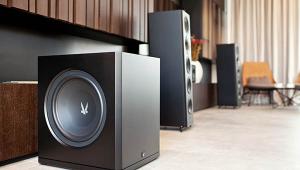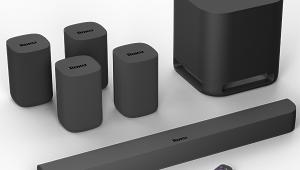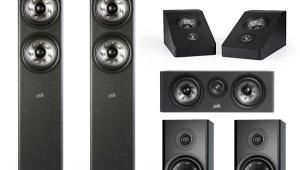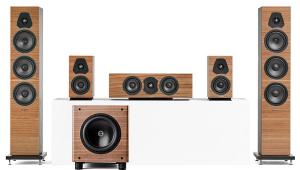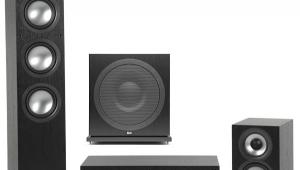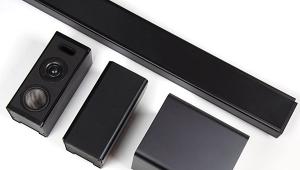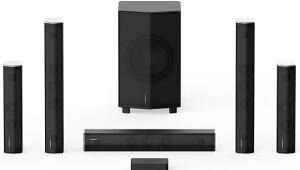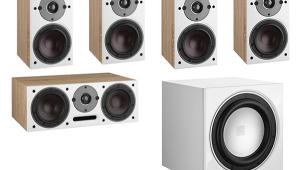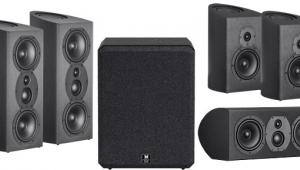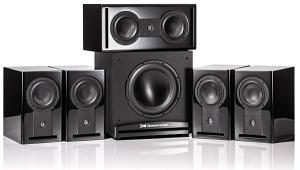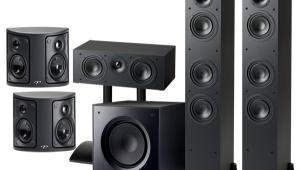Seems like Revel tends to roll off the bass extension of their speakers, with the assumption that people will use subs. If you don't use subs, will the F228Be offer enough bass extension to be used without a sub?
Revel PerformaBe Surround Speaker System Review
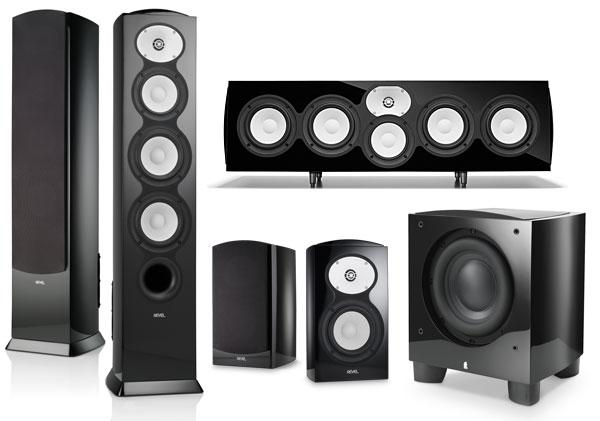
AT A GLANCE
Plus
Superb overall performance
Impeccable fit and finish
Relatively compact
Minus
Pricey
THE VERDICT
It may be pricey, but this PerformaBe system offers sublime performance with both music and movies.
I've reviewed many Revel surround speaker packages over time, but it's been six years since my last Revel review, a system centered on the Performa F208 tower speaker. At around 13 grand, that system could still be considered an affordable option compared with a full surround package built around the company's flagship Ultima range. Now, with its PerformaBe line, Revel has a mid-price speaker offering to help bridge the gap.
 The "Be" in PerformaBe indicates the Beryllium-dome tweeters used across the range. Until recently, the only PerformaBe models were the F228Be tower and M126Be bookshelf. But three additional models were introduced in late 2019, all using the same 5.25-inch midrange and beryllium tweeter: the F328Be tower with three 8-inch woofers; the smaller F226Be tower with two 6.5-inch woofers; and the C426Be three-way center with four horizontally arrayed 6.5-inch woofers. While such an arrangement in a center-channel speaker can cause erratic response due to comb filtering, the C426Be's design eliminates this concern by handing bass over to the midrange at a relatively low 210-Hz crossover point.
The "Be" in PerformaBe indicates the Beryllium-dome tweeters used across the range. Until recently, the only PerformaBe models were the F228Be tower and M126Be bookshelf. But three additional models were introduced in late 2019, all using the same 5.25-inch midrange and beryllium tweeter: the F328Be tower with three 8-inch woofers; the smaller F226Be tower with two 6.5-inch woofers; and the C426Be three-way center with four horizontally arrayed 6.5-inch woofers. While such an arrangement in a center-channel speaker can cause erratic response due to comb filtering, the C426Be's design eliminates this concern by handing bass over to the midrange at a relatively low 210-Hz crossover point.
The F226Be towers, C426Be center, and M126Be bookshelf included in my review system are all ported and come with port plugs to reduce their bass output if needed. Aside from the C426Be center, I didn't use the port plugs for my test. Spikes are provided for the F226Be towers, though I also I didn't use these.

All of the woofer and midrange drivers in PerformaBe models (apart from the coated, pulp-coned subwoofers) employ DCC (Deep Ceramic Composite) cones consisting of an aluminum base coated with a ceramic oxide that forms when aluminum is heated. This oxide is said to help damp the resonances common to metal cone drivers. All of the speakers come with removable, magnetically secured, black grilles. Without them you might find the 14 light-tone drivers staring at you from the front of the room just a little intimidating! Nevertheless, I went completely grille-less since no speaker grille can be totally transparent.
Due to its combination of low mass and rigidity, Beryllium is increasingly used for tweeters in high-end speakers despite its high cost, fragility, and toxic qualities. The fragility is typically handled, as here, by some form of protective screen or shield. And the toxicity is only an issue if it shatters and scatters Beryllium dust (more of a potential problem during manufacturing). The Be tweeters here are also fitted with the latest iteration of Revel's long-standing acoustic wave guide that's said to control high frequency dispersion while better matching the tweeter's dispersion to that of the midrange driver at the crossover point. (All crossovers in the PerformaBe speakers are fourth-order acoustical.)
There are two subwoofers in the Performa line offering either a 10-inch or a 12-inch driver. Revel sent us a pair of the smaller, 10-inch B110V2s. Both models are compact and provide 1,000W (RMS) amplification, rugged drivers said to have 82 percent more linear excursion than their V1 predecessors, and massive (19.2 lb.) magnet structures. There's a single parametric equalizer onboard, and also an Extended mode offering a slightly greater extension in the deepest bass. (In my room I found the bass to be not quite as clean under stress in Extended mode, so I left it off.) All rear panel controls are manual only—there is no wireless setup accessible via an app. Revel's Low Frequency Optimization, a feature in the V1 versions that required a computer for set-up, is not included in the V2 subs.
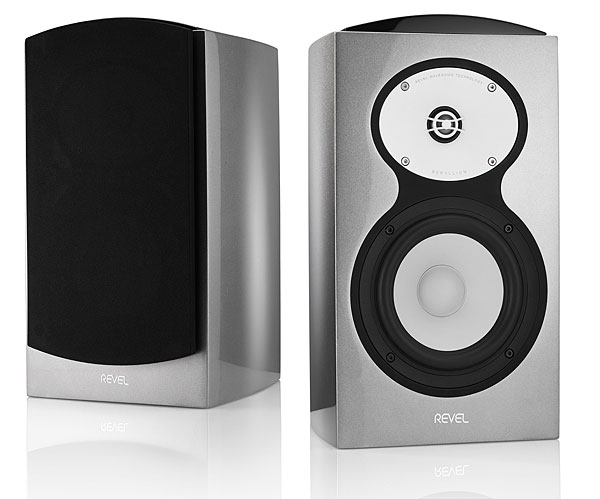
The angled sides and rounded backs of the PerformaBe speakers, together with their internal bracing, are said to significantly increase cabinet rigidity, something to which I could vouch for via the highly technical knuckle-rap test. All models offer pairs of input terminals for either bi-wire or bi-amp use. The subwoofers are available in piano black, gloss white, or gloss walnut finishes, while the tower, bookshelf, and center channel speakers add a metallic silver option.
Setup
I positioned the F226Be towers 9 feet apart, with the C426Be center between them on a low stand beneath my projection screen. The front speakers sat roughly 4 feet out from the wall behind them and were angled toward the center listening seat. One of the B110V2 subwoofers was located in the front of the room, the other in the back as described in Subwoofer Setup: How to Get Great Bass in 3 Steps, a how-to feature that details the layout of my 10,000 cubic feet-plus open-concept room. Revel also sent a pair of M126Be bookshelf speakers to use as surrounds and these were positioned at the sides of the room just behind and slightly above the listening position.
The system driving the Revels included a Marantz AV8805 preamp-processor, three channels of a five-channel Parasound Halo A 52+ amplifier for the fronts, and two channels of a five-channel Outlaw 750 amplifier for the two surrounds. Disc players used were an Oppo UDP-203 for movies and Marantz UD7007 for music.
Music Performance
All music listening was done in stereo, starting with the F226Be towers alone without subwoofers. Most speakers I've used in my very large room without subwoofer support have sounded bass-light. But with these Revels sans subs, large Kodo drums sounded tight and hard-hitting, with no bloat or boom. While this was impressive at first, it soon became obvious that the bottom two octaves or so were largely missing. The bass on Bela Fleck's Flight of the Cosmic Hippo was clean, but it lacked the growl that makes the track effective. And while there was enough going on in a good organ recording to be relatively satisfying, the weight in the low octaves that makes the organ unique among instruments just wasn't there.
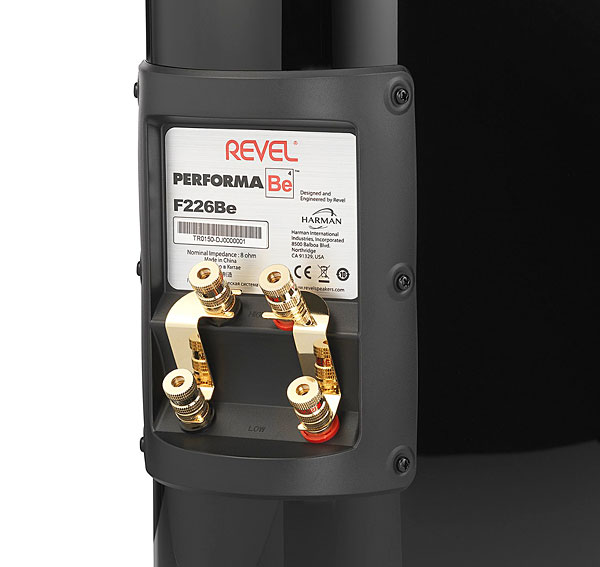
Small rooms, and many mid-sized ones, add so-called room gain in the low frequencies, and a speaker designer must assume a certain room gain when they engineer their speakers. But a very large room can throw these assumptions off (just as a large speaker, designed for use in a large room with little room gain, can be bass-heavy and bloated in a smaller one). I have no doubt that the F226Bes, used alone in a smaller, enclosed room, will produce a richer, more balanced low end. But in a large room or open-concept space such as mine, they need a good subwoofer—or two—to truly sing. Fortunately, a good home theater setup will invariably include this.
With the pair of Revel B110V2 subwoofers fired up and crossed over to the F226Be towers at 90 Hz, the sound was transformed. Percussion remained tight and crisp, but now also had power and depth as the drum strokes energized the room and reverberated into it. The Bela Fleck cut sounded more substantial, and organ nearly rattled the space. Although no subwoofer I've yet used can flap pant legs in my large, open concept space, the two B110V2s, each with a modest 10-inch driver in a small cabinet, proved surprisingly potent.
Many speakers exhibit excessive bloom in my room due to a peak between 100Hz and 200Hz at the most practical listening positions. That's too high in frequency for the parametric EQ in the Revel subwoofers, or in any others, to cure. (My measurements confirmed that this peaking was a room effect and not an issue with the Revel speakers.) While many listeners prefer hearing extra warmth with both movies and music, I don't, and since repositioning the speakers— or the listener—wasn't an option, the only practical solution was some form of equalization.
- Log in or register to post comments


It seems to me that would be the case if he had to turn the bass down to -6, as he commented that this system seems to exaggerate a bass push. Were the speakers appropriately broken in? I have to ask because I wouldn't expect to have to make that kind of downward bass adjustment to top of the line Revels.
While I can understand using middling audio equipment on one hand, it seems to me the review might have been more telling had he used more price appropriate equipment. To me, I don't think you're going to pair a B bucket amp and a Marantz preamp to a $20k speaker system. I would have chosen something like an AVR 60 and the Parasound A51, which together gets you Anthem's award winning room correction. And I think is much better than what he used. With that in mind, you wouldn't have had to contend with an inferior Audyssey, which may have played a factor in the review. I didn't get a real sense of speaker greatness until the surprise at the end. Based on what I read, there would be no way I would pluck down $20k for that system- no way.

Revel's Be226 are actually a fairly priced, considering they are true hi-fi speakers. However the subs are overpriced considering their performance level. Additionally the Be126 are overkill for surround speakers, as such your observations on replacement subs and surrounds are completely valid.

Time for TJN or AG to review the Performa top model F328Be :-) ......


TJN or AG could review the Revel Performa F328Be and the NAD M33 together, and evaluate whether the built-in Dirac Live of M33 can modify/enhance the bass frequencies of the F328Be, without the assistance of separate subwoofers, in their listening rooms :-) ........

